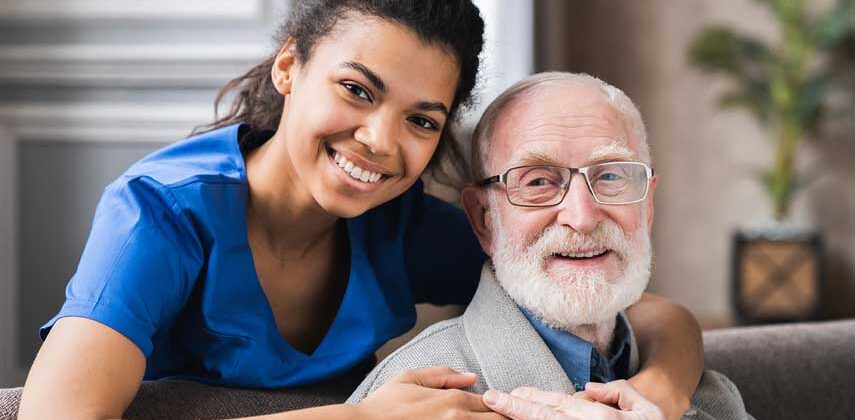Joint pain refers to any type of discomfort, pain, or inflammation arising from a joint. It’s a sharp, stabbing pain that radiates throughout the body. Joint pain is a prevalent issue and has several causes. More often than not, it’s the result of injury or arthritis. People above the age of 65 experience this kind of ache and pain, although youngsters can be affected too. The stiffness and pain limit the person’s mobility, so they can’t move or function properly. If you’re a caregiver to someone who’s ill, you have to meet your own needs, besides those of the person you’re caring for.
Are your caregiver skills enough for the job? Skills like empathy, patience, and problem-solving do come in handy. However, you need a piece of certain knowledge to succeed in your role. You’re the pillar of support for your clients, assisting them to overcome their challenges and achieve their goals. Take the time to understand the issue of joint pain and familiarize yourself with the different pain management techniques. Here are some ways you can help seniors stay comfortable.
#1 Be Ready to Work with Their Doctor
For older adults, communicating effectively with healthcare professionals is a difficult task. Whether it’s the unwillingness to speak up or cognitive decline, seniors find it impossible to speak their minds. That’s’ where you come in. As a caregiver, it’s your responsibility to ensure the patient’s well-being. Please talk with your patient over a couple of days to understand where the pain is, when it’s worst, and what activities pose the most significant difficulty. Write down your observations and discuss them with the doctor.
Lest having an ongoing relationship with the senior healthcare professional, effective communication can be a headache. Dedicate some time and energy to building a strong relationship with the doctor. It’s important to ask how you can get in touch after office hours in the event of a medical problem. You should be prepared to follow COVID-19 safety protocols before entering the clinic.
#2 Encourage Physical Activity
Taking part in joint-friendly exercise can improve joint pain, function, mood, and, last but not least, quality of life. What is more, physical activity can reduce stiffness, promote blood flow, and improve flexibility. Low-impact exercises like water aerobics help strengthen the muscles around the joints and promote bone integrity. Convincing older people to work out might be tricky. Explain the benefits of exercising as a motivational strategy. Insist on the fact that daily activities ultimately lead to decreased pain and disability.
Walking, swimming, yoga are just some examples of low-intensity activities. It’s not necessary to go to the gym for a good workout. There are tons of activities around the home for seniors, such as working in the yard. Pulling weeds, raking leaves, and cutting the grass are manageable activities. Just like us, older people know that working out is good for their health, but they lack the motivation or encouragement to get moving.
#3 Use Heat and Cold Therapy
The heat helps the muscles relax, while cold reduces inflammation, swelling, and pain. When you have a patient that struggles with joint pain, it’s recommended to combine heat and cold therapy. Of course, each one has appropriate uses. For example, you shouldn’t apply heat to a hot, red, and irritated joint. Equally, you should never apply cold to a stiff joint, which isn’t moving well. Heat or cold therapy works by stimulating the body’s healing force. When using heat therapy, make sure the temperature isn’t hot enough to burn the skin.
#4 Try Massage
Massages are present on the list of nearly every caregiver. It would be a shame not to take advantage of its benefits. Massage can help decrease swelling and pain; it enhances joint mobility, not to mention that it provides tension relief. It can even help seniors get a good night’s rest. You can use oils and lotions to lessen the pain. Massage techniques include rubbing strokes, rocking movements, and the application of pressure to specific points.
Spending time with someone is a great gift, but you wish you could do more to make that person more comfortable. Well, massage therapy is the answer. Learn how to give a massage and eliminate the stress you’re feeling. You’ll go from unsure to completely confident with a little bit of practice.
All in all, caregiver-facilitated joint pain management interventions are useful in reducing hospitalizations. When caring for a patient with pain, stay focused on goals such as reduction of pain intensity, proper use of medication, and enhancement of physical function, just to name a few. If possible, make sure that the patient has plenty of social interactions so that they don’t think exclusively about joint pain. Never underestimate the power of empathy when helping someone feel better. Improving your kindness can have fantastic effects, so make an effort.







 This article changed my life!
This article changed my life! This article was informative.
This article was informative. I have a medical question.
I have a medical question.
 This article contains incorrect information.
This article contains incorrect information. This article doesn’t have the information I’m looking for.
This article doesn’t have the information I’m looking for.